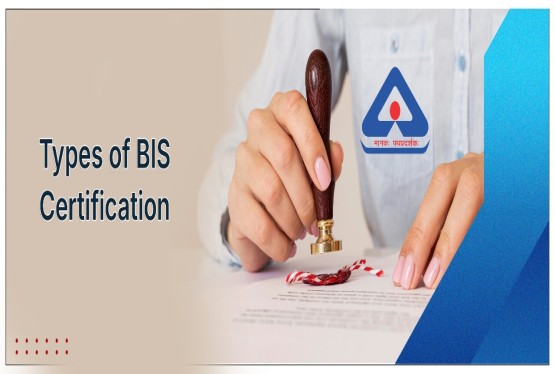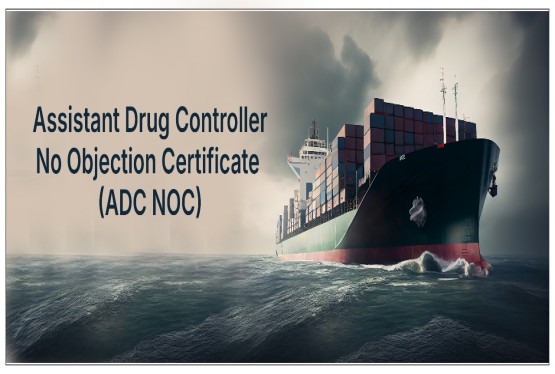LED televisions have transformed the way we consume entertainment at home. With better picture quality, less power consumption, and internet-enabled smart features, LED TVs have become a standard in Indian households. But before these high-tech devices reach the consumers, manufacturers must ensure that their products meet Indian safety and quality standards. This is where the BIS CRS Certification for LED TV comes into play.
The Bureau of Indian Standards (BIS) is the national standards body in India. It introduced the Compulsory Registration Scheme (CRS) to regulate the quality of electronics and IT products, including LED TVs. According to the mandate issued by BIS on 3rd July 2013, LED televisions must be registered with BIS before they are imported, sold, or distributed in the Indian market. In this article, we will explore every aspect of BIS Certification for LED TV, including the process, documents, requirements, and the role of an Authorized Indian Representative (AIR).
What is BIS CRS Certification for LED TV?
BIS CRS Certification for LED TV is a quality assurance process regulated by the Bureau of Indian Standards (BIS) under the Compulsory Registration Scheme (CRS). Under this scheme, electronic products like LED TVs must undergo mandatory testing and certification to ensure they comply with Indian safety and performance standards. This helps in protecting consumer interest and public health by preventing substandard or unsafe products from entering the Indian market.
The relevant Indian Standard for LED TVs is IS 616:2017, which outlines the safety requirements for audio, video, and similar electronic apparatus. BIS Registration under this standard is compulsory for manufacturers—both domestic and foreign—who wish to manufacture or sell LED TVs in India.
Importance of BIS Certification for LED TV
The BIS Certification for LED TV serves as a legal requirement and a mark of safety and quality. It helps consumers make informed choices and assures them that the product is tested and approved by a certified laboratory. For businesses, it enhances brand value and opens doors to the Indian market.
More importantly, without a valid BIS Registration for LED TV, a manufacturer or importer cannot sell or distribute their LED TVs in India. Customs authorities also require the BIS certificate for clearance of imported televisions at ports.
What is an LED TV?
LED TV stands for Light Emitting Diode Television. It is a type of LCD television that uses LED backlighting for better picture quality and energy efficiency. Compared to traditional LCD TVs, LED TVs offer enhanced brightness, lower energy consumption, and a slimmer design. Many of these televisions are now smart-enabled, allowing users to stream content, browse the internet, and connect other smart devices.
Under the Compulsory Registration Scheme, LED TVs with a screen size of 32 inches or more are regulated and must obtain BIS Certification before being launched or imported into India.
Basic Requirements for BIS CRS Certification for LED TV
To obtain the BIS CRS Certification for LED TV, a manufacturer must satisfy four basic requirements. These are known as the four pillars of BIS certification.
1. Manufacturer-Based Certification
The BIS certificate is granted only to the manufacturer of the product, not to traders, sellers, or distributors. This means only the manufacturer is responsible for compliance with Indian standards. Importers may act as an Authorized Indian Representative (AIR) on behalf of foreign manufacturers, but the certificate is issued in the name of the manufacturer.
2. Manufacturing Unit Address
The complete and correct address of the manufacturing unit must be mentioned in the application. If the same product is being manufactured at different factory locations, a separate BIS license is required for each location.
3. Product Category
Every product category must have a unique BIS certificate. However, if multiple models fall under the same product category (e.g., different sizes of LED TVs), they can be covered under a single certificate provided all technical specifications are the same.
4. Brand Name or Trademark
Each brand or trademark requires a separate BIS registration. This means if a manufacturer produces LED TVs under different brand names, they must apply for BIS Certification separately for each brand.
BIS Registration for LED TV – Step-by-Step Procedure
The BIS Registration for LED TV involves a clear procedure and differs slightly for Indian and foreign manufacturers. Below is the detailed step-by-step process.
A) Process for Domestic Manufacturer
If the LED TVs are manufactured within India, the following steps must be followed:
Step 1: Submission of Application
The manufacturer must submit an online application on the BIS portal with all the required documents and applicable fees. Offline submission of hardcopy documents is also needed in some cases.
Step 2: Product Sample Testing
A product sample must be sent to a BIS-recognized laboratory for testing as per IS 616:2017 standards. The test report must be valid at the time of submission.
Step 3: Document Submission
Once the testing is complete, the manufacturer must submit the final application, including the test report and all relevant documents, either online or as a hard copy.
Step 4: BIS Scrutiny and Verification
BIS officers review the application, verify documents, and may conduct additional clarifications if needed.
Step 5: Grant of License
If everything is found in order, the BIS CRS Certification for LED TV is issued, allowing the manufacturer to sell, distribute, or export the product in the Indian market.
B) Process for Foreign Manufacturer
Foreign manufacturers must appoint an Authorized Indian Representative (AIR) to manage their certification process in India.
Step 1: Nomination of AIR
The first step is to nominate an Authorized Indian Representative. If the foreign company has a branch office in India, it will act as the AIR. If not, the brand owner or another Indian entity must be appointed as AIR.
Step 2: Submission of Application
The AIR submits the application online along with all necessary documents and pays the required BIS registration fee.
Step 3: Sample Testing
The product sample is sent to a BIS-authorized laboratory in India for testing under IS 616:2017 standards.
Step 4: Submission of Application and Test Report
The AIR submits the application and the test report to BIS either online or in hard copy format.
Step 5: Review and Verification
The BIS officials review the application, verify the documents, and may seek clarification if needed.
Step 6: Grant of BIS License
Once all compliance requirements are met, BIS issues the BIS Certification for LED TV under the name of the foreign manufacturer.
Documents Required for BIS CRS Certification for LED TV
The following documents are needed to apply for the BIS CRS Certification for LED TV:
-
Filled BIS application form
-
Construction Data Form (CDF) and Critical Component List (CCL)
-
Copy of business license of the manufacturing unit (translated into English if applicable)
-
ISO certificate of the manufacturer
-
Details of product marking and label
-
Trademark Registration certificate
-
Trademark authorization letter (if applicable)
-
Technical specification sheet or user manual
-
Photo ID of authorized signatory or AIR
-
Company registration proof of AIR (for foreign manufacturers)
-
Authorization letter for signatory (if the person is not head of the factory)
All documents must be signed by the manufacturer and, where applicable, notarized and attested by the brand owner and AIR.
Important Points to Consider During BIS Certification
Here are a few additional key points that manufacturers and importers must keep in mind while applying for BIS Registration for LED TV:
-
Always select a BIS-recognized testing laboratory with a valid license that is not under suspension.
-
Make proper logistical arrangements for the safe delivery of product samples to the laboratory.
-
Ensure that all documents are prepared before sample submission to avoid delays.
-
Fill the CDF and CCL forms carefully, ensuring accurate product and component details.
-
Test reports are valid for 90 days. Submit the application to BIS before the report expires, else a fresh test will be needed.
-
The approval process may take between 15 to 60 days, depending on the complexity and accuracy of the application.
-
The use of the ISI Mark is only permitted after BIS Certification is granted.
Role of an Authorized Indian Representative (AIR)
The AIR plays an important role in the BIS registration process for foreign manufacturers. The AIR acts as the main point of contact between BIS and the foreign applicant. They are responsible for filing the application, submitting the documents, coordinating with the testing lab, and replying to any queries raised by BIS. The AIR must have a valid business registration in India.
There are three possible scenarios for appointing an AIR:
-
If the manufacturer has a branch office in India, that office acts as the AIR.
-
If there is no branch office, the Indian owner of the brand can act as AIR.
-
If neither exists, another eligible Indian entity must be nominated as AIR.
Why is BIS CRS Certification for LED TV Mandatory?
The Government of India, through its Ministry of Electronics and Information Technology (MeitY), made it mandatory for certain electronics including LED TVs to be registered under BIS CRS. The aim is to:
-
Ensure the safety of Indian consumers
-
Prevent the import of low-quality or hazardous products
-
Promote quality manufacturing and fair trade
-
Build trust in Indian and global markets
Without BIS Certification, clearance of imported LED TVs is not possible at Indian ports, and any product found without certification can be seized or penalized.
Conclusion
LED televisions have become an essential appliance in every home. However, before any LED TV can be sold or imported in India, it must meet safety and quality standards set by the Bureau of Indian Standards. The BIS CRS Certification for LED TV ensures that these products are safe, efficient, and reliable for Indian consumers.
Whether you are an Indian manufacturer or a foreign brand, obtaining BIS Certification for LED TV is not just a legal necessity—it’s a commitment to quality. From selecting the right testing laboratory to accurate documentation and representation through an AIR, every step requires attention and compliance with BIS regulations. With a clear understanding of the procedures and requirements outlined in this guide, businesses can successfully navigate the process of BIS Registration for LED TV and confidently introduce their products to the Indian market.
If you need any support in BIS Registration or Certification, then you can connect with Compliance Calendar experts through email info@ccoffice.in or Call/Whatsapp at +91 9988424211.
Frequently Asked Questions (FAQs)
Q1. What is BIS CRS Certification and why is it important for LED TVs imported or sold in India?
Ans. BIS CRS (Compulsory Registration Scheme) Certification is mandated by the Bureau of Indian Standards (BIS) for all LED televisions intended for sale or import into India. This certification ensures that these products adhere to specified safety and quality standards, safeguarding consumer interests and maintaining market integrity.
Q2. Who is eligible to obtain BIS CRS certification for LED TVs?
Ans. Primarily, the Bureau of Indian Standards (BIS) issues licences strictly and exclusively to the actual manufacturer of the LED TV product. While foreign manufacturers cannot directly obtain the certification, they must appoint an Authorized Indian Representative (AIR) to facilitate the application process on their behalf. However, the BIS certification is ultimately granted in the name of the manufacturer who holds responsibility for the production process and compliance with Indian standards.
Q3. What are the key requirements related to the manufacturing premises and address for BIS CRS certification?
Ans. The correct and complete address of the manufacturing facility must be clearly mentioned in the documentation submitted for BIS certification. If a manufacturer operates more than one factory or production unit for the same product (whether in India or abroad), then a separate BIS licence must be obtained for each distinct manufacturing location. BIS certification is non-transferable between factory sites, even if the product remains the same.
Q4. Does each LED TV model require a separate BIS CRS certification?
Ans. Each distinct product type must be certified separately under the relevant applicable Indian Standard (IS 616:2017 for LED TVs). However, if a particular product category includes multiple variants or models that fall within the same specification, a single BIS licence may be issued to encompass all such models under that category. In essence, different models of the same product type can be covered under a common licence, provided they conform to the same standard.
Q5. What is the significance of IS 616:2017 in the context of BIS CRS certification for LED TVs?
Ans. IS 616:2017 is the relevant Indian Standard that outlines the safety requirements for audio, video, and similar electronic apparatus, including LED TVs. Manufacturers seeking BIS CRS certification for their LED TV products must ensure that their products comply with the specifications detailed in this standard before they can be marketed in India.












































































_crop10_thumb.jpg)







_Rules,_2025_learn_crop10_thumb.jpg)














































